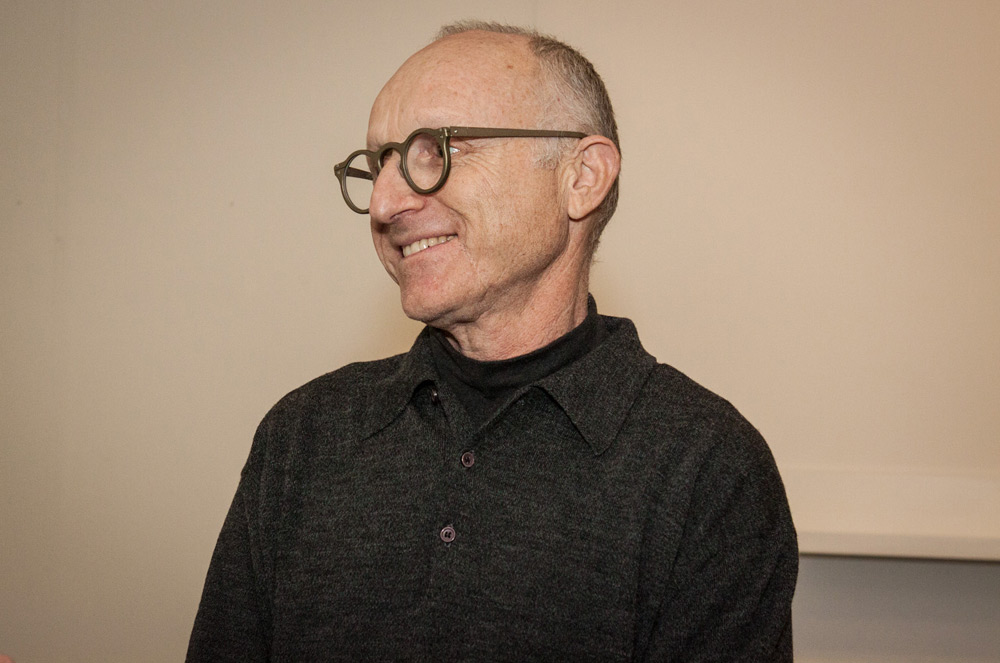Artist Talk: Barbara Kasten at the Aperture Foundation
Barbara Kasten is a photographer by chance, not choice. She uses a camera mainly because no other medium will do.
"I had been resorting to many more painterly techniques," she said, referring to her use of colored lighting gels. "But along the way, I learned a lot about photography."
The abstract photographer — who has shot everything from Jackson Pollack's studio to ancient Egyptian artifacts — explored her constructivist roots during a 29-year review of her work that took place as part of a collaboration between Parsons School of Design and the Aperture Foundation. The event was hosted by George Pitts, Director of Photographic Practices at The New School.
Kasten's work may be the antithesis of Photoshop. In fact, she still shoots with film. All her effects are done in-camera, using lights, mirrors and gels. At times, she has even employed a lighting crew from the film industry. There isn't a Lightroom preset to be found.
"It has to be real, but it doesn't look real. That is at the core," she said. "I know it exists and I'm going to light it in such a way that I will show you it exists. But it will disappear the second I turn the light off."
For example, a first look at Kasten's photos of the World Financial Center might prompt a person to wonder if they looking at a composite.
"The pink ball is really a plexiglass mirror," she explains. "It's probably 6 feet in diameter and it's facing up to the ceiling, which is a dome. It's just a reflection of the dome, so that's why it looks like there's a ball in there."
Certainly, there are quicker and easier ways to mimic Kasten's style in 2012, but they just wouldn't be real.
— "I see a film noir influence in your work, such as with the elongated shadows behind the Egyptian statue ["Purple Wings"] which reminded me of The Maltese Falcon. Are you inspired by these movies at all?"
Kasten: "No, not really, but I do love them!"
— "What is your lighting process? Is it trial and error, or do you know exactly where to place everything at this point?"
Kasten: "I think lighting is very simple. Have you ever taken a Lighting 101 course?"
— "No."
Kasten: "You should. The concepts are all there, and also in books. It really is quite easy to follow."
— "Well, I'm not using hotlights, I use Speedlights outdoors with radio triggers."
Kasten: "Oh! [looks concerned]. Ick."
— "How much control over the lighting process did you have at the architectural sites? Were you directing all the lighting placement, or was it a collaborative process?"
Kasten: "I had a gaffer act as a go-between with the director and the crew, so it was my direct input to him. So I pretty much was in a director's role when I was on the set ... It takes like three trips to do a photograph. I'd edit down the snapshots to views I thought were workable, then I'd plan the ordering of all the colored gels. Iit was weeks in preparation and multiple steps along the way to get there. When we went back to shoot, the composition and everything was already in place."
— "Did you ever get everything all set up and suddenly realize, "Oh no, that pink isn't right!" and have to change it at the last minute?
Kasten: "Oh yeah. I've done that. If the pink isn't quite right, we change it. But I've never taken a camera to another location. I've always been firm on that. I know what I want in terms of framing."






